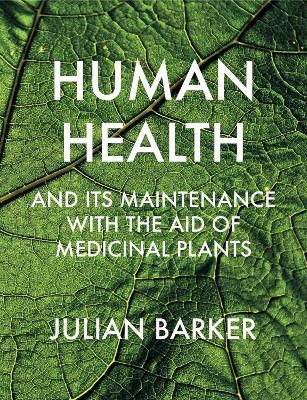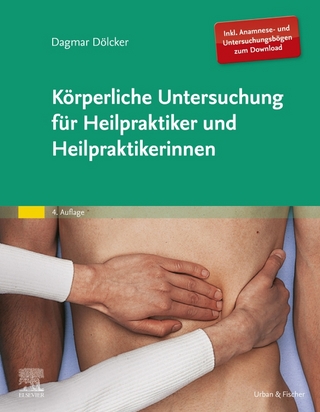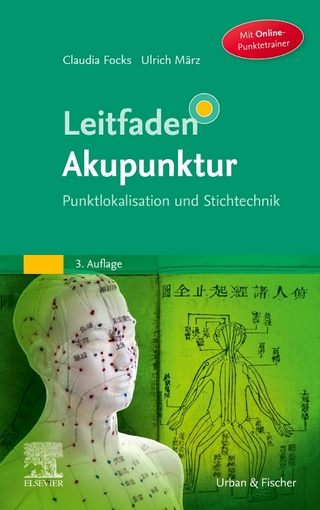
Human Health and its Maintenance with the Aid of Medicinal Plants
Aeon Books Ltd (Verlag)
978-1-912807-60-4 (ISBN)
Based on forty years of clinical practice, Julian Barker takes knowledge, information, and data from various disciplines, presenting an integrative model of health, linking circadian biology with the psychosocial human being.
He develops a theory that attempts to explain how medicinal plants modify human physiology and how they contribute to health.
Aimed at the student acquiring knowledge and developing the skills to practise medicine as well as the qualified herbal practitioner, this thought-provoking work breaks new ground in health theory.
Julian Barker is the author of The Medicinal Flora of Britain and Northwestern Europe and History, Philosophy and Medicine: Phytotherapy in Context. He started his training as a herbalist in North and Central America then returned to Britain as an apprentice herb grower at Suffolk Herbs and joined the first cohort at the School of Herbal Medicine. He became a member of NIMH in 1982 and opened a multidisciplinary clinic in Brighton where he ran a training clinic until 2009. He has served on NIMH’s Accreditation Board since 1998. Julian taught botany at the School of Herbal Medicine for over twenty years, and supervised BSc dissertations and taught philosophy on the MSc course in herbal medicine at the University of East London.
PREFACE
THE ORGANISATION OF THE TEXT
PART ONE: POISE
SECTION ONE: HEALTH: WHAT CAN WE MEAN?
- Definitions of health
- Definition of health for the purposes of the current work
- The scope and purpose of the model
- The limitations of the model Model of health in this current work
SECTION TWO: AXIOMS, THEOREMS AND IDEOLOGY
- Split personalities
- Personalities restored
- Axioms
- Human development
- Mind, thoughts, conceptions
- The sound of one hand clapping
- There is no life without motion
- There is no life without energy
SECTION THREE: THE BIOLOGICAL BASIS OF THE ADAPTIVE RESPONSE
- Five crucial interlocking ideas
- 1/5: Mindedness
- 2/5: The interconnected matrices
- 3/5: Life as trajectory
- Human drives as a function of time
- 4/5: Capacitance
- 5/5: The distribution of energy (maintenance of a ratio between capacitance and adaptation)
- Recapitulation of Section 3 – The biological basis of the adaptive
- Some examples of accumulation and discharge
- The constant cycle of accumulation and discharge
- The adaptive capacity
- Summary of common chronic conditions
- Footnote to Section 3: adaptive capacity is not a heritable trait
SECTION FOUR: POISE AS AN ECOLOGICAL APPROACH TO HEALTH
- Parallel worlds
- Binaries: the garden with forking paths
- Circadian binaries and transition zones
- Symmetry
- Gaia’s sister: the biosphere—separations and divisions
- Things and events
- Boundary conditions
- Bounded states
- Where do we draw the line and with what do we draw it?
- Essentialism
- Soil
- Gaia’s children: fauns and fauna
- Separations and divisions
- Fixation
- Oscillation
- Fixation
SECTION FIVE: THE TERRAIN: MIND AND MINDEDNESS
- The necessity for a concept of terrain
- Organisational structure
- Structure and information
- The trajectory
- Physiology as music
- Anatomy and physiology in time
- Resonance
- Lines and penetrance
- Rationality
- Reason
- Bipolarity
- Facts and occasions
- Things and events
- The structure of the terrain
- Stabilising the trajectory
- Causality and scale: death and life
- Mindedness in the structure of poise
- The hypothalamic mind
- Mindedness
- Consciousness
- Poise as stabiliser of the trajectory
- The adaptors and regulators of poise
- The analogic mind
- Consciousness
- A memory is always an abstraction
SECTION SIX: LIMITATIONS OF THEORY
- Escape from limitations
- Time and drive
- Rheology
- Patterns and drivers
1. The hypothalamic–pituitary driver
2. Cholinergic and aminergic referees/regulators
3. Hypothalamic–posterior pituitary Intensifiers
4. Organ responders and pacemakers
- Potential applications of theory
- Configuration of the terrain within the human body
- Moravec’s paradox
- The materialist defence
SECTION SEVEN: HEALTH AND POISE
- The hypothalamic mind
- Mindedness
- Consciousness
- Poise as stabiliser of the trajectory
- The adaptors and regulators of poise
- The analogic mind
- Consciousness
- A memory is always an abstraction
PART TWO: PEOPLE: WITHIN AND WITHOUT THE CLINIC
Preface to Part Two
SECTION EIGHT: PUBLIC HEALTH AND MEDICINE
- The medical theoretician
- Alternative medicine
- Traditional medicine
- What is the alternative to medicine?
SECTION NINE: THE CONSULTATION IN SOCIAL CONTEXT
- The setting the speech the style the point the outcome
- Whom do we treat?
- The presentation
- Classification of patients?
- The Worried Well
- Discomfort
- Contrarians
- Fugitives
- Preaching to the converted
- Consumer health-ists
- Difficult patients
- Self–defeating patients
- Anxious patients
- Common–sense pluralists
- One–offs
- Cost
- The functions of a physician
- Good medicine
- The great divide
- The cobbler’s children go to school barefoot
- Continuity and belonging
- Style
- Loyalty and power
- Your own style
- Fashion and style
- The practice is organic
- Could herbs help my husband?
SECTION TEN: STAGES IN THE CLINICAL PROCESS
- The clinical process
- Observation precedes the physical examination
- The consultation as data collection
- Records
- Stages in the process
- Judgements
- Advice
- Assessment of the terrain from the history and examination
- The presentation of the patient
- Time of day
- The circadian moment
- Our fractal histories
SECTION ELEVEN: CLINICAL EXAMINATION
- The face
- Tongue, eye and pulse
- The voice
- Hair
- Chilly mortals
- Containment
- Bodily cavities in the axial skeleton
- The musculoskeletal system
- Zoning
- Human cartography
SECTION TWELVE: SYSTEMIC REVIEW
- Sleep
- Fatigue
- Confusion
- Lungs and colon
- Heart
- Energy, Drive and fatiguability
- Balance in the broadest sense
- Digestive system
- Teeth
- Renal or sifting system
- Skin, hair and circulation
- Hands, feet and circulation
- Menstrual history
- Asymmetric symptoms
- Seasonal
- Snap observations
APPENDIX TO SECTIONS TEN, ELEVEN AND TWELVE:
RECOMMENDATIONS SHEETS
- Sheet 1. General recommendations towards helpful dietary habits � � �
- Sheet 2. Special recommendations towards reducing the provocation of insulin (as well as blood lipids) and reducing abdominal fat
- Sheet 3. Iron
- Sheet 4. Daily breathing exercise
- Sheet 5. Seasonal fasting
- Sheet 6. GOUT and high levels of uric acid in the blood
SECTION THIRTEEN: PATTERNS OF LIFE
- Staging, cycling and timing
- The primes of life
- Integrality: comparing and contrasting
- A chart of ages
- Think of a number
- Biorhythms
- Biological time
- Photosensitivity
- Claims of sensitivity
- Meteoropathy and barometric sensitivity
- Acoustic hypersensitivity
- Biological time and infectious illness
- Recovery time
- Sleep
- The parallel brains
- Modules of sleep
- The alternation between sleeping and feeding Ratios
- In summary
ECTION FOURTEEN: THE PATIENT AS PERSONALITY
- Four element theory
- Contemporary theories of personality
- Personality and age
- The patient as personality
- Alternators
- Alternators as a failure of circadian entrainment
- Mental states
- Mood swings
- Mood stabilisation
- Containment
- Creativity
- Promiscuity and paradoxical loyalty as a response to separation anxiety
- Mental illness is always social illness
- Attachment and detachment
- Configuration
- All of our lives are a continuity
- Act and activation
- Pleasure and pain as alternators
- Personality and clinical assessment
- Anxiety and personality
- Personality and time
- Personality as behaviour
- Wilfulness and selflessness
- Will and willingness
- Personality as an emergence from family
- The pivotal person
- The sacrificial personality
- The patient as personality
- The patient as commodity
- The human economy
- The human ecology
- Personality as outcome
- Personality forgotten
- Accumulation and discharge–recapitulation Multiple choice
SECTION FIFTEEN: THE CLINICAL ARENA: SPACE AND TIME
- The appointment
- The space
- Holding the space
- Sacred space
- Mimesis
- What is herbal medicine good for?
- Enthusiasm
- The Ailment: What does the patient wish for? Where exactly is the problem? � � � � �
- Health: the elusive diagnosis
- Complaints: a metaphor?
SECTION SIXTEEN: THE PRACTITIONER OF MEDICINE
- Empathy and the dressing–up box
- Imagination
- Improvisation
- An actor prepares
- Ambiguity
- Style of herbal medicine in Britain
- A broad church
SECTION SEVENTEEN: THE UNCONSCIOUS
- Repression
- Leaking
- Eurocentric
- Unknowing
- Dreams and dreaming: the facets of life
- Healing
- Reflexive collectivism
- Triangles of identity
- Fixity and range
- Liminality
- Zeal, family size and escape from the shadows
SECTION EIGHTEEN: THE ENTRAINMENT OF POISE
- Symbolic and pragmatic thinking
- Evidence based medicine
- He who pays the piper calls the tune
- A definition of poise
- Uniqueness and the biology of poise
- Loss of capacitance leads to symptoms of subjective illness
- Capacitors
- Fatigue, listlessness and depression
- Poise is modifiable
- Is it really healthy to never get ill?
- Persistence
- A diagrammatic representation of poise
- Accidents, distractions and dithering
- Power and purpose
- Quantifying poise
- Fibonacci number series and spatial and temporal relationships Metaphors of poise
- The sailing boat
- Being under the weather
- Hill and stream
- Opening and closing the fan
- The poise economy
- Memorialists and poise
- The therapeutic enhancement of poise
PART THREE: PLANTS
Preface to Part Three
SECTION NINETEEN: MINDEDNESS IN PLANTS AND ANIMALS
- Humoralism
- The pharmaceutical model
- Why plants? how do they work?
- How do plants exert an effect upon the human body?
- Colloids and films
- Essentialism
- Terrain
- Belief, facts and assertions
- The four drives
- Coherence
- Theraps
- Fake projection and authentic acquaintance
- Replacement therapies
- The medicinal act
SECTION TWENTY: THE MULTI–MODAL HYPOTHESIS FOR THE ACTIONS OF MEDICINAL PLANTS: SENSORY PRIMING AND STOCHASTIC RESONANCE
- The multi–modal hypothesis for the action of medicinal plants
- Sensory priming
- Stochastic resonance
- Pulsatility
- Poly–cyclicity
- Similarity and sameness, differentiation and uniqueness
- Family resonance
- Personalised medicine
- Trials and tribulations
SECTION TWENTY ONE: MEDICINAL PLANTS
- Polyvalence and contradiction
- Contradictions within the prescription
- Drugs or adaptogens
- Stimulus—organisation—response events or SORe
- Symptomatic treatments
- Is the medicinal plant an object or a process?
- Chemical constituents of plants
- Structure and function
- Animal impulses and plant responses
- What can we do?
SECTION TWENTY TWO: MODES METHODS AND PARADIGMS OF TREATMENT
- The priority of needs
- The treatment of ailments
- Spasmophilia and the steps in the fall from poise
- Problems with initiating recovery
- Adverse effects on the side
- A health reminder
- Ageing and poise: losing the ratio
- Inclination and poise
- Ailments and poise
- Alternation
- Segmented systems
- Alternation prescribing for alternators
- Treat the insomnias by managing circadian entrainment
- The parallel interlocked systems of homeostasis and circadian
- All along the digestive tract: the many presentations of dysfunction
- Fussy eaters
- Gastro–oesophageal reflux
- Bloating or postprandial fatigue
- Intestinal transit
- Diverticulosis
- Pain
- Pain referred but also displaced
- Daily medicinal plants in food
- The disadvantages of stamina
- An approach to migraine and asthma
- Gout and hyperuricaemia
- Chilblains
- Heavy legs
- Essential hypertension
- Pimples, styes, boils, lipomas
- Eczema and psoriasis
- Upper respiratory infections
- Arthralgia and myalgia
- The bow wave
- The treatment of pre–menstrual syndromes as well as low fecundity
- Advice and habit
- Eating meditation
- Modal treatments
- Alcohol (harmful use)
- Anxiety
- Acne
- Anaemia (and Genital Ratio)
- Arthralgia and myalgia, aching and stiffness Calamitous expectation
- Children and adolescents
- Congestion
- Disconnected states
- IBS–A
- Intolerance
- Osteoporosis
- Wobbly states
SECTION TWENTY THREE: PLANT TAXONOMY AND SYSTEMATICS
Botany
Appendix to section on plant taxonomy and systematics
Nineteenth century
- de Candolle in France
- Lindley in Britain
- Engler & Prantl in much of Continental Europe
- Bentham & Hooker in Britain
Twentieth century
- Bessey in the United States
- Hutchinson in Britain
- Dahlgren
- Benson
- Kubitzki system
- Lyman David Benson. plant classification 1957
Principles of the taxonomy of the vascular plants in the twenty-first century
A list of useful vascular plants
Arranged according to recent phylogenetic research (APG IV 2016)
- Lycopods Clubmosses
- Ferns
- Leptosporangiate Ferns
- Gymnosperms
- Angiosperms
- Basal Angiosperms 3 Families
- Magnoliids 17 Families
- Monocots
- Eudicots
- Leguminosae
SECTION TWENTY FOUR: MATERIA MEDICA
Lists of plants
Recommendations for the dispensary
Gymnosperms
Pinaceae
- Pinus
Monocots
Amaryllidaceae
- Alliums
Asparagaceae
- Convallaria
- Ruscus
Zingiberaceae
- Zingiber
Poaceae (= Gramineae)
- Agropyron
- Zea
Eudicots
Papaveraceae
- Fumaria
Ranunculaceae
- Anemone (alternative therapeutic name Pulsatilla)
Grossulariaceae
- Ribes
Leguminosae
Fabaceae
- Glycyrrhiza
- Galega
- Medicago
- Melilotus
- Trigonella
Rosaceae
- Agrimonia
- Alchemilla
- Filipendula
- Prunus
- Rubus fruticosus: Brambles
- Rubus idaeus
- Poterium or Sanguisorba
- Crataegus
- Rosa
Ulmaceae
- Ulmus
Cannabaceae
- Humulus
Urticaceae
- Urtica
Fagaceae
- Quercus
Hypericaceae
- Hypericum
Passifloraceae
Salicaceae
- Salix
Rutaceae
- Citrus aurantium
Malvaceae
- Tilia
Brassicaceae (=Cruciferae)
- Capsella
Ericaceae
- Calluna
- Vaccinium
Apocynaceae
- Vinca
Boraginaceae
- Borago
Solanaceae
- Fabiana
- Dulcamara
Oleaceae
- Fraxinus
- Olea
Plantaginaceae
- Plantago
Verbenaceae
- Verbena
Lamiaceae (=Labiatae)
- Vitex
- Ballota
- Hyssopus
- Lamium
- Lavandula
- Leonurus
- Lycopus
- Marrubium
- Melissa
- Mentha pip
- Ocimum
- Marjorana
- Rosmarinus
- Salvia and Salvia sclarea
- Satureja
- StachysorBetonica
- Thymus
Menyanthaceae
- Menyanthes
Asteraceae (=Compositae)
- Achillea
- Arctium
- Calendula
- Matricaria
- Inula
- Silybum
- Taraxacum
- Artemisia
- Eupatorium
- Hieracium
- Solidago
Adoxaceae
- Sambucus
- Valeriana
Apiaceae (=Umbelliferae)
- Angelica
- Anthriscus
- Foeniculum
- Levisticum
Addendum
Schedule of the use of medicinal plants by neuroendocrine action
- Table of plants with effects upon the Autonomic Nervous System
- Table of plants with reducing effects upon the Autonomic Nervous System
- Table of plants with effects upon the Hypothalamic–Pituitary Axes
- Table of plants that either increase or reduce reactivity
- Table of plants with effects upon the Blood Vessels and Coagulation
- Drainage of organs
SUMMARY
Part One
Part Two
Part Three
EPILOGUE
BIBLIOGRAPHY AND REFERENCES
Bibliography for plant systematics, as well as general & field plant studies
- Phytotherapy, phytochemistry & traditional herbal medicine
- Textbooks of basic medical sciences
ACKNOWLEDGEMENTS
INDEX
| Erscheinungsdatum | 13.07.2020 |
|---|---|
| Verlagsort | London |
| Sprache | englisch |
| Maße | 189 x 246 mm |
| Themenwelt | Sachbuch/Ratgeber ► Gesundheit / Leben / Psychologie ► Alternative Heilverfahren |
| Geisteswissenschaften ► Psychologie | |
| Medizin / Pharmazie ► Naturheilkunde ► Phytotherapie | |
| ISBN-10 | 1-912807-60-2 / 1912807602 |
| ISBN-13 | 978-1-912807-60-4 / 9781912807604 |
| Zustand | Neuware |
| Haben Sie eine Frage zum Produkt? |
aus dem Bereich


